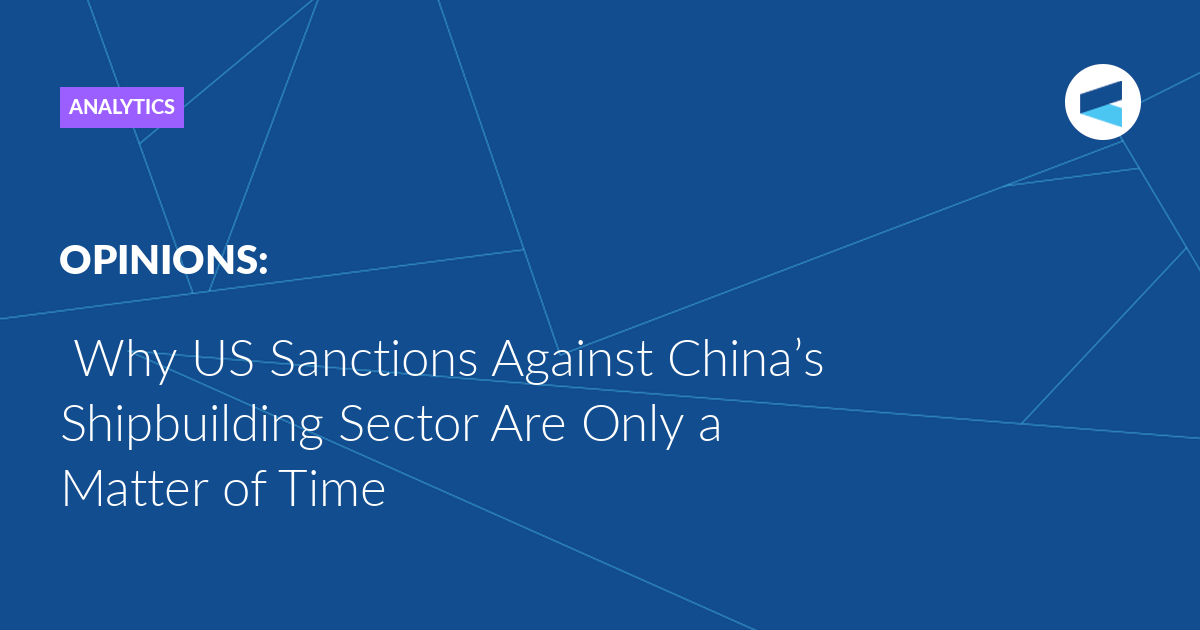The formal basis for Joe Biden’s statements, which organically fit into the logic of the US election struggle, and the start of the investigation was a petition
filed by the five largest American trade unions. It lambasts the “unreasonable and discriminatory acts, policies, and practices of the People’s Republic of China to dominate the maritime, logistics, and shipbuilding sector that burden or restrict U. S. Commerce.” The last accusation is especially weighty. With its help, anti-Chinese sanctions of any configuration can be removed from the prohibitions imposed by the binding rules of the GATT/WTO. In practical terms, the unions propose
a simple, but brilliantly effective measure: to charge all ships of any countries and companies calling at American ports an additional fee if they are Chinese-made ships.
It is believed in US government circles and the political establishment that they have more than enough grounds to launch draconian anti-dumping and any other procedures against the Chinese merchant fleet and Chinese shipbuilding. However, that will not be the first step taken in this direction. The Trump administration initially set out to put pressure on the Chinese shipbuilding industry when, in 2020, US authorities imposed
restrictive measures against more than 20 Chinese companies suspected of assisting the PLA in the construction and militarisation of artificial islands in the international waters of the South China Sea. Then the Entity List (a list of organisations and individuals acting contrary to the national security and foreign policy interests of the United States) included such large corporations as China Communications Construction Company, specialising in the construction of transport infrastructure; companies developing navigation and communication technologies; as well as individual research institutes focused on the shipbuilding industry.
It is noteworthy that in the mid-1970s, the US shipbuilding industry employed 180,000 workers. The industry occupied a leading position in the world. American shipyards had orders for the construction of about 70 commercial ships. No one thought of the PRC then. Half a century later, 70% of the American commercial shipyards have been closed down, according to a petition from American trade unions. The shipbuilding industry has slipped to 19th place in the world. In 2022, only five ships were built in the United States. In China in 2022, 1,800 commercial ships were built, i.e. 360 times more. In terms of the scale of launching new ships, China has surpassed the Republic of Korea and Japan combined. China, South Korea and Japan now account for over 90% of the world’s tonnage, according to estimates by the Congressional Research Service. The US accounts
for only 0.2%. In 2023, China continued to rapidly increase commercial vessel production. The shipbuilding industry in China grew by another 12%. Over the next three years, China will launch
70 to 80% of all tankers and bulk carriers built in the world.
Such phenomenal success was achieved thanks to the preferential taxation and financing of the industry, its large-scale subsidies, government orders, inclusion in plans for the implementation of the Belt and Road Initiative and colossal budgetary investments. From 2006 to 2013, when Chinese shipbuilding began to take off, the state allocated $91 billion for the development of the industry. According to
the Centre for Strategic and International Studies, in the period from 2010 to 2018, it has already invested $132 billion in it. According to
Western sources, the state pays from 13 to 20% of the cost of commercial ships launched by Chinese firms.
In the way China has crushed not only American, but also global shipbuilding, Western economists see a manifestation
of Beijing’s mainstream economic strategy. In contrast to American and European businesses, China’s priority is not making a profit, the absence of which is a barrier for Western companies, but a dizzying increase in production and capturing markets. In the short term, they make even low-profit production profitable. Over the long term, they will ruin competitors, ensuring market dominance with all the benefits and advantages that come with it. This is how Beijing has acted, crushing the global market for solar panels, electric batteries, electric vehicles, etc., including consumer goods, electronics, and durable goods. Next in line
are aircraft manufacturing and railway equipment.
In response, Beijing constantly emphasises that the accusations brought against it are lies and insinuations. Chinese companies beat the competition because they are more competitive. The Chinese economy, numerous industrial and infrastructure projects in other countries, and the Belt and Road initiative contribute to, rather than hinder their development. The current decision of the Americans to closely “take on” the Chinese shipbuilding industry represents “a mistake on top of mistakes”.
Western experts explain Beijing’s strong reaction to the new threats from overseas by noting the fact that China managed to get ahead of the curve. It protected itself from American sanctions.
The Valdai Discussion Club was established in 2004. It is named after Lake Valdai, which is located close to Veliky Novgorod, where the Club’s first meeting took place.
Please visit the firm link to site






